Skokie Theater
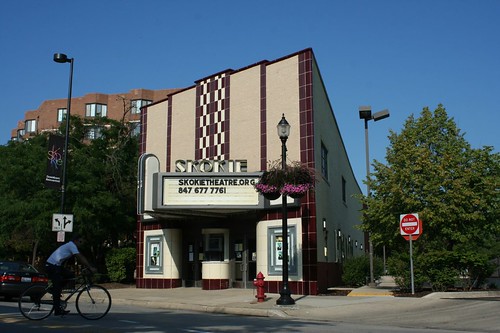
Our first stop is the humble little Skokie Theater, on Niles Center Road in downtown Skokie. The Art Moderne facade is a later addition to a circa-1916 building. After many years as a movie theater of varied genres, today this little gem serves as a small-scale (140 seats) concert venue.
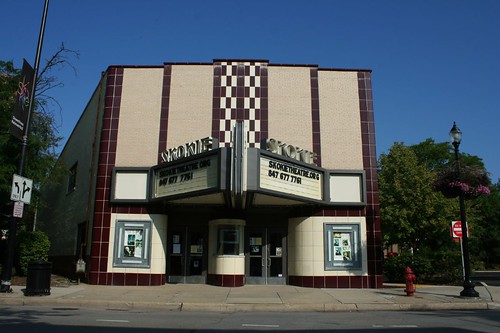
Of particular interest, the facade shares elements with both the styles I posted last week - the low-budget commercial Deco/Streamline storefronts, and the paneled WW2 storefronts.
Wilmette Theater
Also on the north shore, this little theater is the most humble of the bunch. Its main interest is that it shares the same porcelain enameled panels as most of the 1940s storefronts from last week.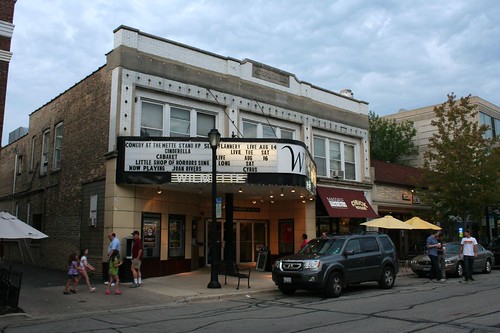
The Wilmette Theater is part of the Metropolitan Block, a World War I-era building that got a partial face lift during the Depression.

Lake Theater
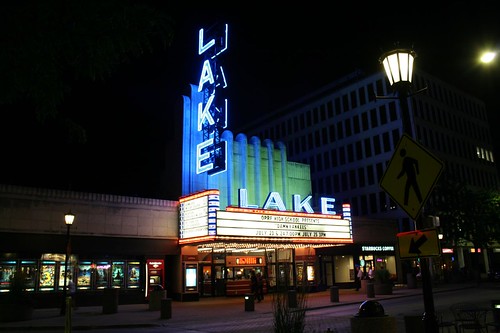
A fully-illuminated theater is something that should be seen by both day and night. Sadly, I haven't made it out to Oak Park in the daylight since finding this remarkable Deco waterfall.
The Lake Theater (on Lake Street, natch) dates from 1936 (architect Thomas W. Lamb). The spectacular marquee remains fully illuminated, as does the vertical theater name sign, which lights up letter by letter, top to bottom, before blinking off again. Inside, the theater has more recently become home to salvaged artifacts from other Chicago theaters that no longer stand.
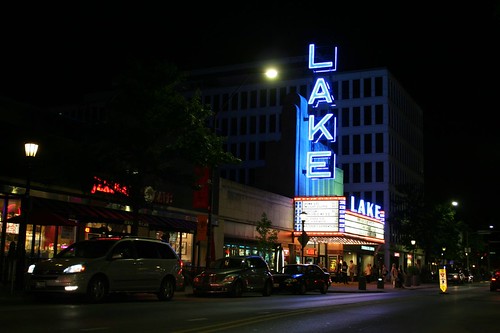
York Theater
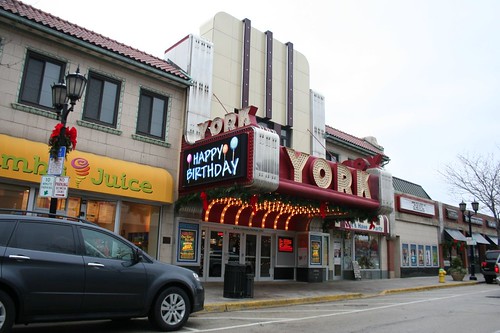
The York Theater (York Road, Elmhurst) looks sharp by day... but it's at night that this facade truly comes alive.
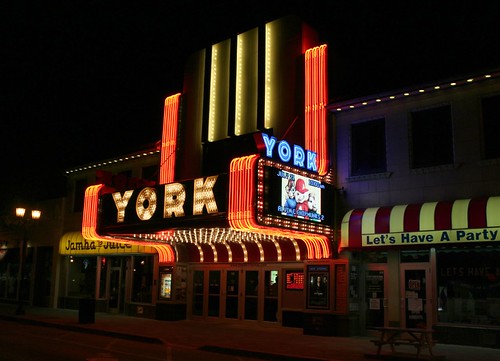
Curved neon follows the sensuous lines of the facade, uniting the building and its marquee into a single entity. The structure was only 14 years old in 1938, when architect Roy B. Blass replaced its Spanish-influenced facade with a new, ultra-up-to-date facade in the Art Moderne style.
Like the Lake Theater, the York is owned by the Classic Cinemas company, who have taken superb care of both places and runs on a business model of celebrating historic theater design. Also like the Lake, the York has survived into the present as a viable first-run theater by gobbling up adjacent retail space for conversion to additional theater screens. Combined with the triplexing of the original auditorium, this has brought the York up to a total of nine screens.
If you visit the York and your timing is right, you can also visit the offices of the Theatre Historical Society of America - they're located in an upstairs office right next to the theater.
No comments:
Post a Comment